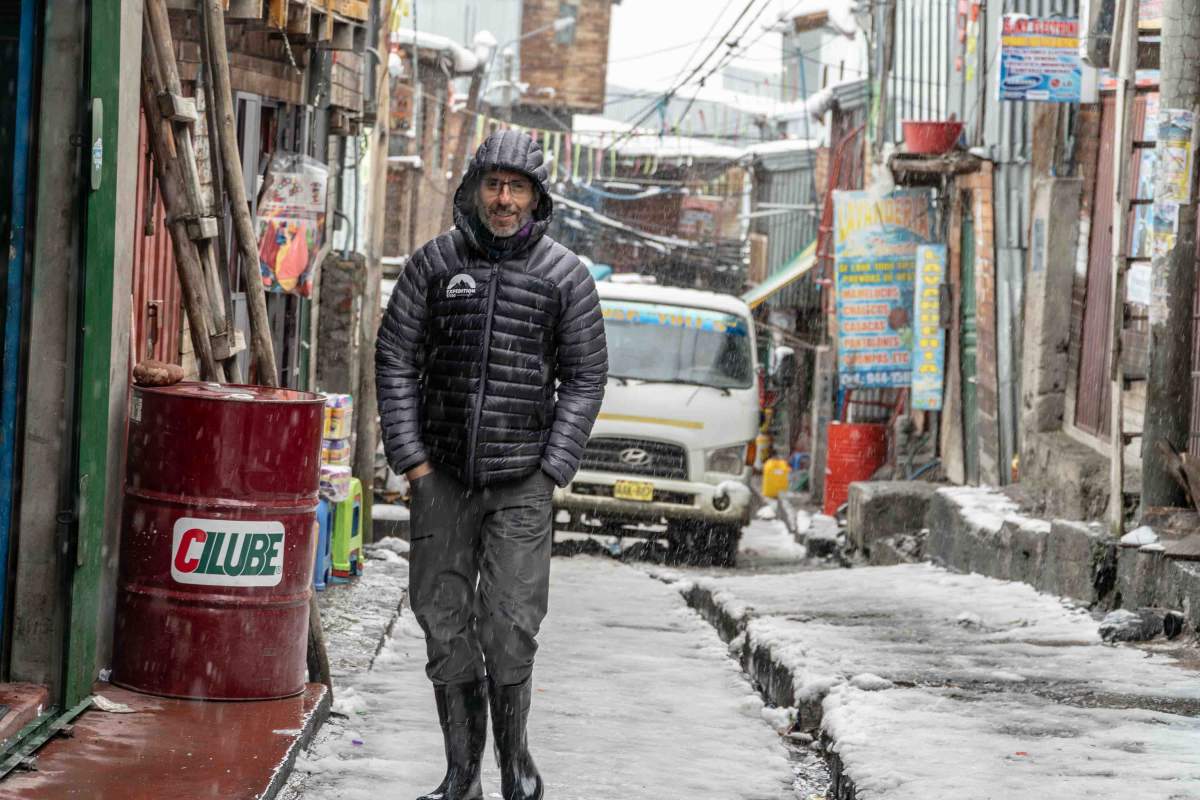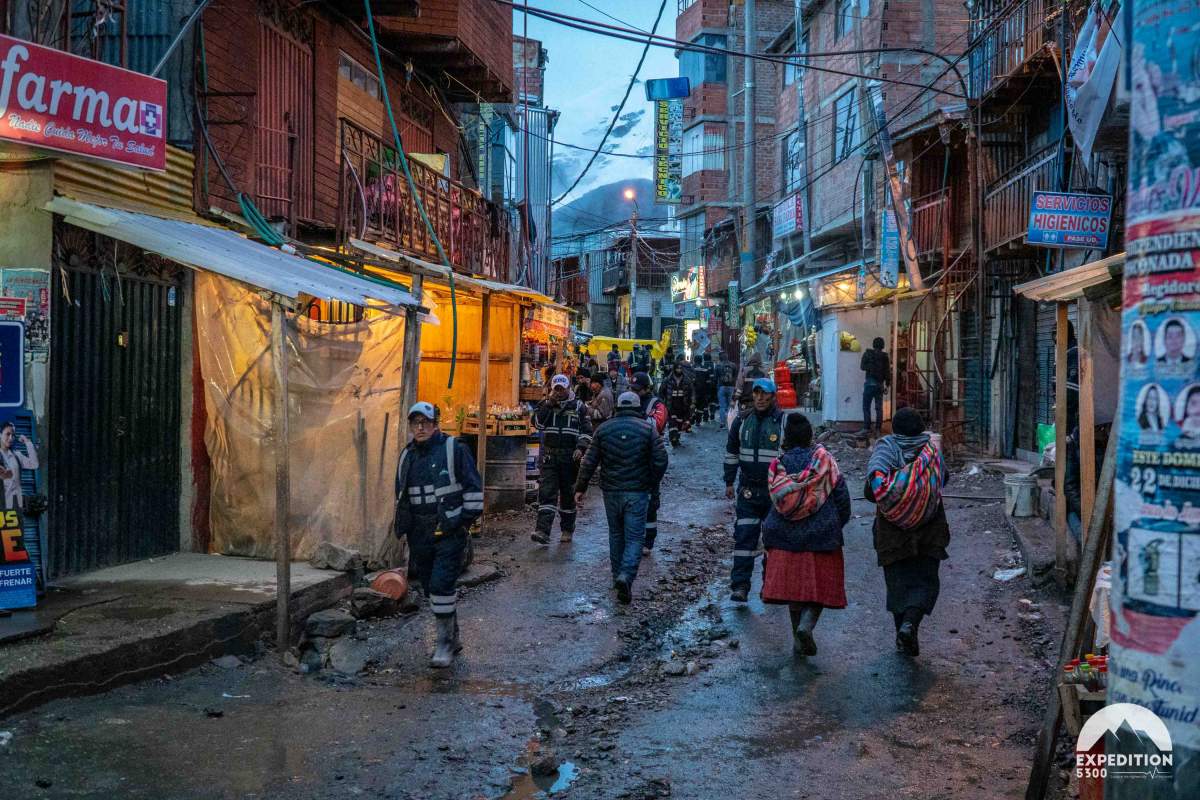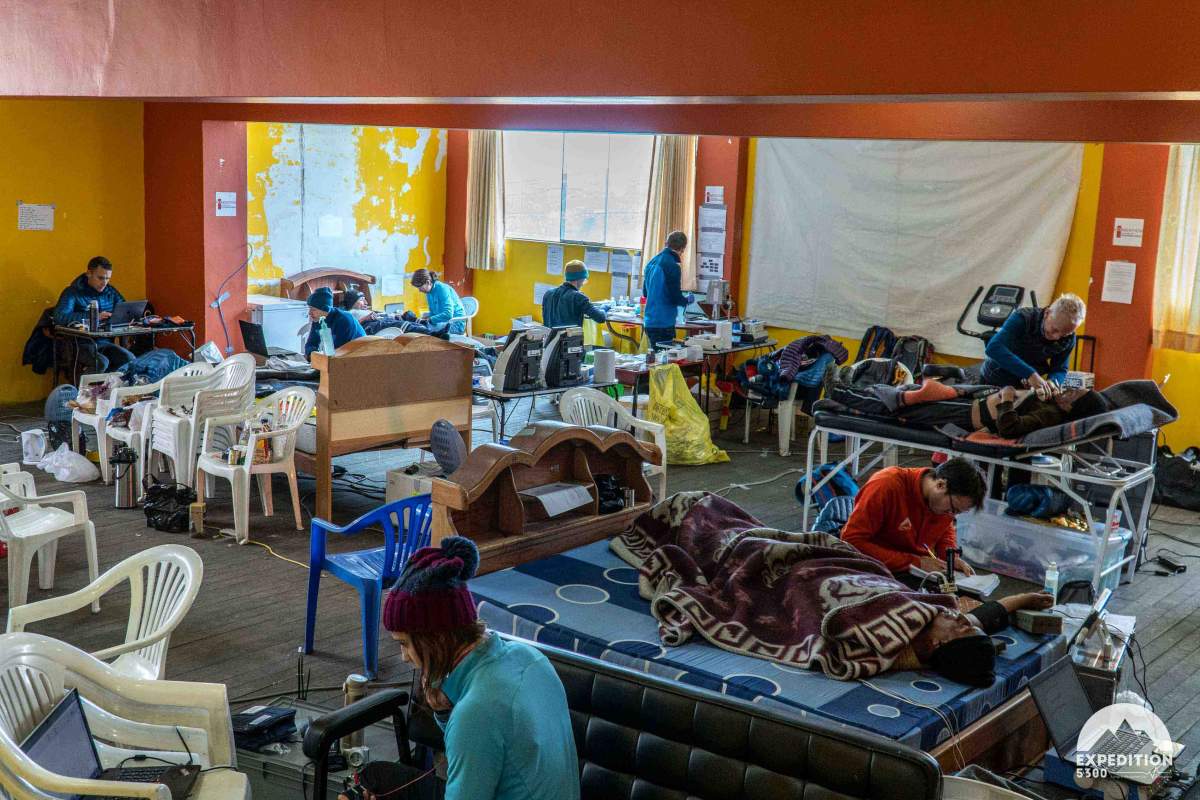Are you a journalist? Please sign up here for our press releases
Subscribe to our monthly newsletter:

La Rinconada, Peru, the highest town in the world, is also one of the toughest places in the world. Apart from squalid living conditions and environmental pollution, residents of this gold-mining settlement in the Andes mountain range – most of them poor miners hoping to strike it rich – grapple with thin oxygen, which at the altitude of 5,300 meters is only half as dense as at sea level. Weizmann Institute of Science’s Prof. Gad Asher joined a team of French researchers, Expedition 5300, that recently traveled to La Rinconada. Their goal: to study how the town’s population adapts to oxygen deprivation while launching projects to improve the residents’ living conditions. Asher came along to study how the expedition members themselves adapted to the extreme shortage of oxygen.
Asher and his group in Weizmann’s Biomolecular Sciences Department have already conducted pioneering research revealing the effects of oxygen on the body’s biological “clocks,” which are present in every single cell and operate in approximately 24-hour, or circadian, cycles. It’s long been known that circadian clocks – which regulate sleep cycles, the secretion of many hormones and a host of the body’s other functions – are influenced by sunlight, food and temperature, but Asher’s team was the first to discover that they can also be reset by oxygen levels in the air. Those studies were conducted in cell culture and in mice. Now Expedition 5300 presented Asher with an opportunity to explore how oxygen levels affect circadian clocks in humans.

The expedition’s scientists, headed by Dr. Samuel Vergès of Université Grenoble Alpes, set up a makeshift lab in La Rinconada in 2019 to study chronic mountain sickness, but he and his team also aim to initiate badly needed health and educational projects to benefit the locals. La Rinconada’s population has over the years swelled to more than 50,000 – spurred by the price of gold, which has soared about 30-fold in the past half century. But this shanty town, bordering on a glacier, was never officially intended as a permanent settlement: It lacks a proper sewage system and running water, and it has no hospital. Most residents live in improvised shacks without heating; mounts of garbage, slow to disintegrate in oxygen-poor air, pile up all over; and much of the water supply is contaminated by the mercury used to separate gold from rock. Instead of wages, the miners are once a month allowed to keep to themselves the rocks they have extracted that day, including the gold ore it contains – usually a paltry amount, despite their dreams.
Asher joined Expedition 5300 for three weeks during its second foray to La Rinconada, in February 2020. The scientists stopped over for a few days in the city of Puno on the shore of Lake Titicaca, at an altitude of 3,800 meters, to acclimatize themselves to the altitude. Still, upon arriving in the gold-mining town, they were all plagued by the woes of oxygen deprivation: fatigue that bordered on exhaustion, and in some cases, sleep apnea typical of severe mountain sickness. Under these harsh conditions, they agreed to the constant intrusion involved in taking part in Asher’s experiment. With the help of expedition members, he collected their – and his own – blood samples every four hours throughout a 24-hour period, first upon their arrival in Peru, at sea level, and then at altitudes of 3,800 and 5,300 meters. The toughness of life in La Rinconada, in a way, facilitated the experiment: Limited by physical hardship and few options for dining out, all members of the expedition followed the same daily routine – eating the same meals together and going to bed at the same time – which created a uniform schedule that was well suited to studying circadian clocks.

Once the blood samples are transported to the Weizmann Institute, Asher will analyze them to see whether rhythmic gene expression and the levels of metabolites tied to circadian clocks had been affected by oxygen deprivation. Since up to 40 percent of human genes follow a rhythmic, circadian pattern in their expression, Asher plans to examine is whether this pattern is altered by shortage of oxygen.
A number of diseases – including asthma, chronic obstructive pulmonary disease and obstructive sleep apnea – are linked to periodical drops in oxygen intake, and their symptoms tend to follow daily, cyclical patterns, suggesting that they may be linked to disruptions in circadian clocks. In fact, a recent study in mice, conducted in Asher’s lab, has shown that a shortage of oxygen disrupts clocks differently in different tissues, thus causing their “ticking” in various body organs to get out of sync with one another. In other words, it interferes with the vital alignment among the clocks throughout the entire organism. Studying how oxygen deprivation affects circadian clocks in the human body in real-life conditions, such as those presented by the expedition to La Rinconada, can therefore advance the understanding of human health and disease.

Prof. Gad Asher's research is supported by Susan and Michael Stern; and the European Research Council.
Photos: ©Axel PITTET - Expedition 5300